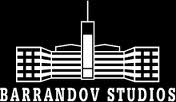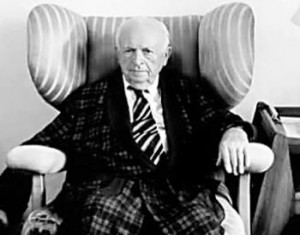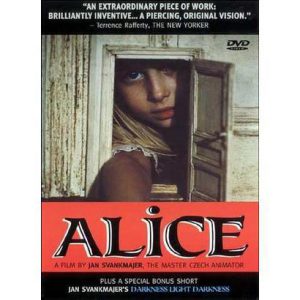I remembered the conversation I had with one of my colleagues from Brno in Hradac Kralove, She asked me about the French movie Untouchable and asked if I knew some Czech movies, my answer was no. That is when I became interested about the history of Czech cinema.
Czech cinema
The cinema is a good way to show the complexity and feeling of an era. In the 1920s, the Barrandov studios offered the most modern facilities for filmmakers in the world. The films reflected the complexity of being born in Czechoslovakia. The Nazi regime and the communist regime with censorship asked directors to make movies in conformity with the idea of the regime or to leave the country. But this repression is probably what lead filmmakers to shoot movies with ironic comments and highlight human weaknesses. This genre of movies are considered ‘typical Czech’.
The beginning of the seventh art until today
The first film begun in 1896 with the Edison Kinetoscope in Prague. In the 1920s and 1930s, the country produced more than 20 movies per year. The star Anny Ondrakova, left the country for a role in an Alfred Hitchcock’s movie Blackmail under the name Anny Ondra.

Czech artistic movement Devetsil elected Charlie Chaplin as an honorary member, and all the artists of this movement experienced the possibilities of poetic and surrealist cinema. With the revolutionary step towards sound, movies became even more popular and people poured into the theaters around Prague. In 1933 the uncle of future President Milos, created Barrandov The Exit of Prague, the most modern studios in Europe with the architect Max Urban.

New women idols triumphed, such as Oldrich Novy (Kristian 1939), Hedwig Kiesler, Slovaks as know her as Hedy Lamarr (Ecstasy, 1933) and Lida Baarova who became saddly notorious as the mistress of Joseph Goebbels.

Jiri Vaskovec Werich and satirists who were already known for their surreal performances, experienced the same success in the cinema with The world is Ours in 1937 Karel Plicka highlighted the traditional life of Slovak peasants with The Song of the Earth in 1935. Under occupation, the Nazis took over the management of the Barrandov studios. They produced a hundred films without investment or upgrading the studios. After the war, the Barrandov studios were nationalized by the communist regime. The directors had to adapt to the demands of socialist realism in making movies to the glorify the industrial production and the role of Czech Communists during the Resistance, for example, The Silent Barricade to Otkar Vavra in 1949.

Otkar Vavra is a filmmaker born in 1911, he chose to adapt his movie themes according to the spirit of political regimes. He was also an important person in the FAMU film school of Orague, established in 1946, he gained a lot of respect from the young film makers.
The animation
Animation started in 1946 when Czech Jiri Trnka (1912-1969) won the grand prize of the cartoon on the international scene with Zviratka Petrovsti (Brigands and Small Animals)

Trnka became a major figure of the cartoon industry, with dozens of films that draw on many traditions of the country, legends or fairy tales, and the work of artists and illustrators such as Joseph Lada. In 1955, a puppet film The Good Soldier Schweik inspired Hasek’s novel, it is based on the famous illustrations of Lada. Trnka contributed to the demand for high-quality animated movies. In the 1980s and 1990s, the public discovered the surreal vision of Jan Svankmajer (born in 1934), using puppets, clay skeletons, brick bulk to create a disturbing world, scary see in Alice (1988 ) or Konec stalinismu v Cechach in 1990 (End of Stalinism in Bohemia) or Faust in 1994.

Thanks to its inventiveness and the quality of its technical expertise, Czech animation in recent years has experienced significant international recognition.
New wave
Directors during the communist period knew the importance of censorship. But the 1960s with the policy of “socialism with a human face” gave talented directors the opportunity to display their talents. This period allowed the creation of remarkable series of movies:
- “Intimate Lighting” Ivan Passer,
- “Diamonds of the Night” 1965 by Jan Nemec,
- “Closely Watched Trains” 1966 Jiri Menzel
- “The Little Daisies” 1966 Vera Chytilova.
In all these movies, it was not the socialism heroism but the Czech creativity of using irony, irreverence and sense of the absurdity that allowed Czech cinema known worldwide. But this maverick spirit did not survive the repression of the Prague Spring in 1968. Either the filmmakers followed the rules or they would be exiled. Some directors who were exiled continued to be successful, like Milos Forman. The director was born in 1932 in Čáslav, not far from Prague, he was orphan as a child when his parents were deported to Auschwitz and died there. Raised by the rest of his family, he went to film school in Prague and soon produced his first feature film: The Ace of Spades (1963) and The Loves of a Blonde (1965), in the films Czechoslovak New Wave. After 1968, he moved to the United States where he established his reputation as a director with Taking off in 1971, One Flew Over the Cuckoo’s Nest in 1975, most recently in 1984 Amadeus, partly shot in Prague in the neighborhood Mala Strana, or Goya’s Ghosts in 2006.

A few directors stayed in the country after 1968 and were successful. For example, director Vavra created a monumental trilogy, Days of Betrayal, Sokolovo, and Liberation of Prague, which show a fairly rigid Czechoslovak history, and depicts the Munich agreement in 1938 until the end of the Second World War. After 1989, state subsidies were replaced by foreign investment, and investors were attracted by the resources and expertise of Barrandov technicians. Very beautiful movie were produced after the fall of the wall, such as peasant drama The Cow (1995) Karel Kachyna. Victor Grodecks realizes Mandragora, it is a chronic of dark young people in the streets of Prague. The Sverak brothers, made a sentimental story about a man forced to adopt a little boy, which illustrates the relationship between the Czechs and the Russians, the film Kolja released in 1996 and met an international success. He obtained in 1997 the prize for best foreign film at Cannes and an Oscar the same year.
Finally
Czech cinema experiences occasional success internationally, but the films also suffer from a chronic lack of money, therefore it is especially difficult for films to compete with American blockbusters. In recent years new directors have had success, such as Jan Hřebejk who has distinguished himself with Pupendo in 2003 which is a satire of Prague hypocrite and Morose in the 1980s, crushed by a communist regime. I asked my colleagues what were their favorite classic films. Their responses varied in genre and style such as Czech ago pelíšky, which can be considered as a traditional Czech movie, it is a comedy-drama about the communist era. Also fairytale such as 3 oříšky pro popelku, but also traditional Czech comedies like s Tebou mě bavi svět or slunce seno that highlight parts of the Czech Republic a little more secluded and their locals.

Do you know any typical Czech films?

This is the most amazing website.I like to read and share this with my friends.Thank for sharing this information with us.Am the member of Spades card game and like to suggest everyone to play this game for free and online.